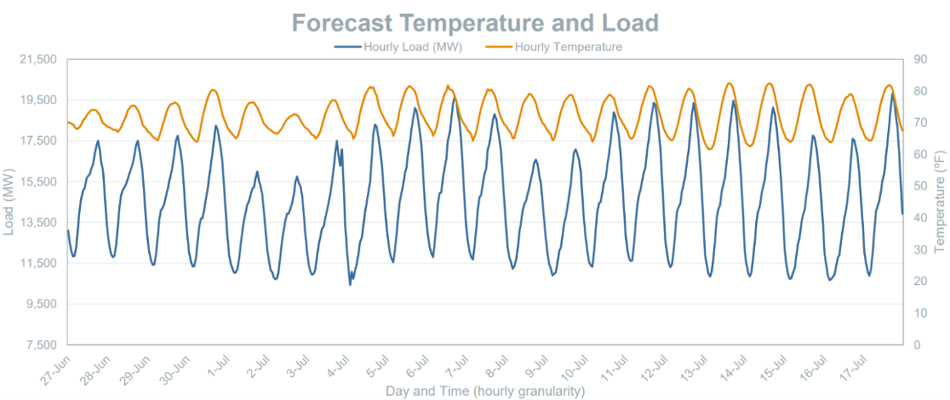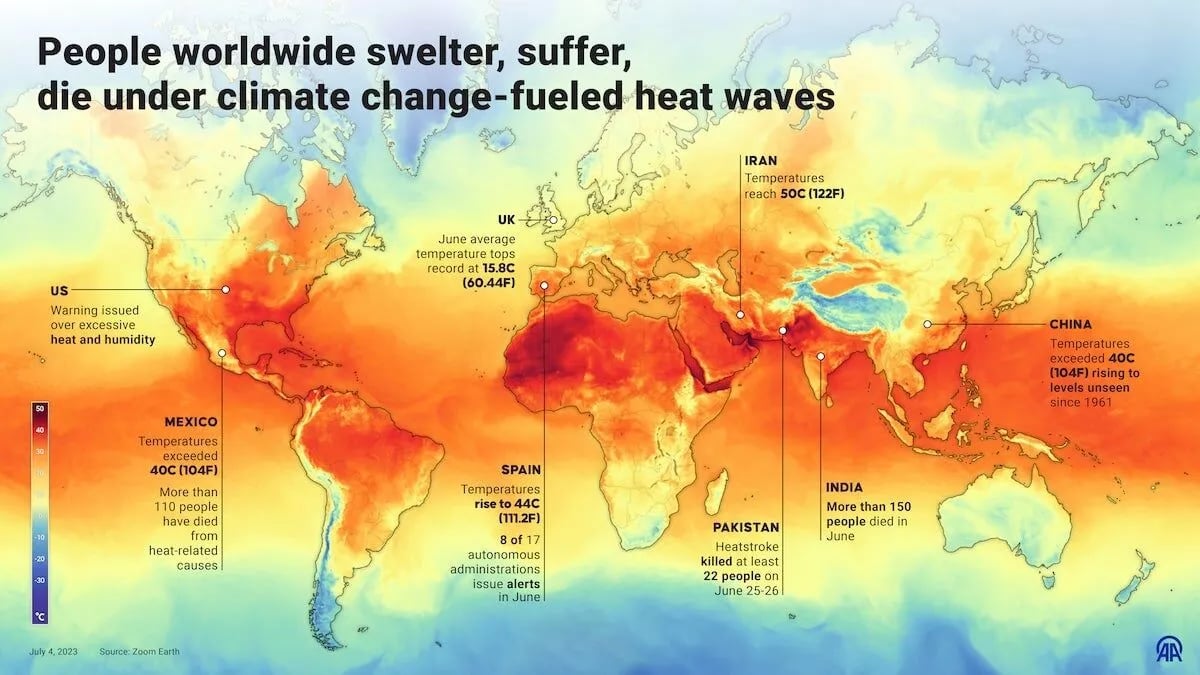On July 5, we sent thousands of our followers a “Shave the Peak” alert because of the high forecasted peak electric demand on July 6. Shave the Peak is our program designed to inform people, via text and email alerts, how and when to reduce their power usage on days when peak demand rises above 22,000 MW. The electric demand forecasted on July 6 by ISO-New England for July 6 was 22,700 MW. The actual peak electric demand on July 6 was recorded as 22,389 MW at 5:50 PM. Note that without behind-the-meter solar, peak demand would have been 24,264 MW.
With Shave the Peak, we don’t want to pester you every day in the summer, but the forecasts for electricity demand and weather showed that July 6 would likely be the highest on both counts until later in July.
As the summer continues, more people turn on their air conditioners to alleviate the feeling of rising temperatures. Increasing the demand on the power grid leads to increased fossil fuel consumption (more pollution) and increased wholesale prices (higher cost to consumers like us). The power system in New England sees demand peaking as solar power production tails off at dusk and it’s still hot. “Peaks” on a given summer day refers to the hour that demand was highest (for example, 6:30 pm). Shave the Peak alerts often recommend saving energy during a window of 4-8 pm, depending on the day’s specific conditions.
July 6 recorded a high temperature in Boston of 86°F with an average temperature of 79.93°F. The following 21-day temperature and load forecast published on June 28 by ISO-New England did not predict a peak day before July 17.

Source, ISO-NE: 2023-06-27_21-Day_Energy_Emergency_Forecast_and_Report.pdf (iso-ne.com).
The ISO-New England forecast temperature and load graph show the July 6 high temperature reaching the low 80s with peak demand below 19,500 MW. This goes to show that our electricity grid has to be flexible enough to handle unexpected changes in weather and power generation from all types of sources.
Although we did not expect a peak day to occur this early in the summer, emissions are generally much higher than in other months of the year. Using data from ISO-NE, comparing the June demand and the forecasted July demand shows large differences in peaks. The average temperature in June in Boston was 65°F and the average peak load was 15,000 MW. In comparison, the average temperature in July in Boston is forecasted to be in the mid-70s based on historic data with the average peak load forecasted to be approximately 18,000 MW. That difference of 3000 MW of demand means a lot more fossil fuel combustion and higher wholesale prices. Regardless of whether we send out a peak alert, it is important to note that this increased demand yields higher fossil fuel emissions and higher prices for consumers. We’re simply saying that in July and August, it is important to be conscious of how much electricity we use and when we use it.

The Estimated Carbon Dioxide Emissions graph is generated by data from ISO-NE from July 6. The graph demonstrates how during peak times more fossil fuels are used to meet demand. Natural gas, oil, and coal production are specifically increased during peak times between 4:00-8:00 PM.
| Global temperatures are rising! In global news, the average global temperatures between July 3 and July 6 were the four hottest recorded days on Earth. Thursday, July 6 reached a maximum average global temperature of 63.01°F. These days topped off the previous record set in August 2016. 
An infographic on global heat waves fueled by climate change via EcoWatch |
You can help reduce peaks!
The first thing you can do is sign up here to learn when peaks happen.
Second, reduce how much electricity you use on hot summer afternoons. If you have an electric car, avoid charging during the peak. Likewise, shift your usage of large appliances such as clothes washers, electric dryers, and dishwashers to hours before or after the peak.
If you use air conditioning, adjusting the temperature is another way to help shave the peak. Turning your air conditioning off or setting it to run at a higher temperature is particularly effective if your air conditioning is provided by a window unit or conventional air conditioning equipment and not a cold climate heat pump.
If you have a heat pump, sometimes turning off your heat pump for multiple hours could actually use more energy when you turn it back on. Instead of turning off your heat pump, simply adjust the temperature a few degrees higher for the duration of the peak.
Conventional air conditioners (window and central) are so energy intensive that even a few degrees can make a big difference. If turning off your air conditioner during peak hours would make your home too hot, pre-cooling your home is one tactic to maintain a safe temperature while reducing peak demand. An hour before peak demand begins, lower your thermostat a couple of degrees to make your home extra cool. Then raise the temperature a few degrees above normal when the peak starts. This will make it more likely that you’ll stay comfortable throughout the peak without your air conditioner cycling on.
Shaving peaks can reduce electric grid costs & reduce emissions! To learn more about shaving the peak, read our most recent Shave the Peak blog here and sign up for alerts here.



Comments